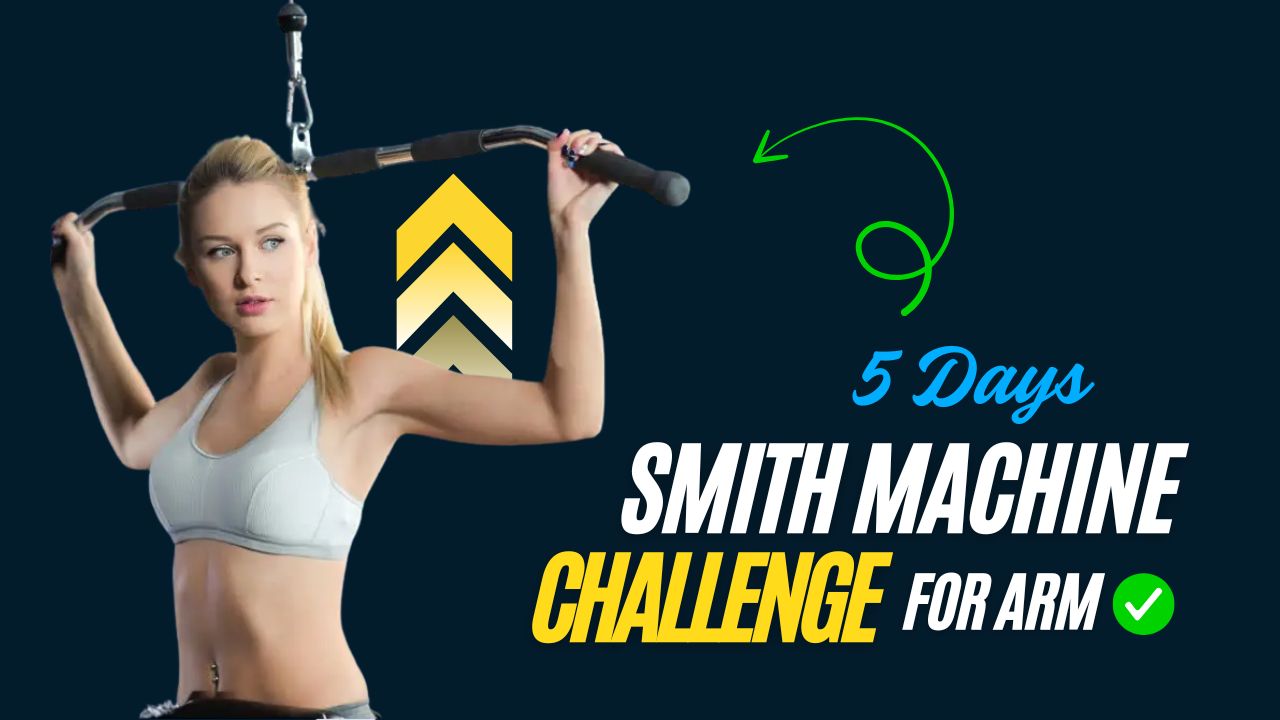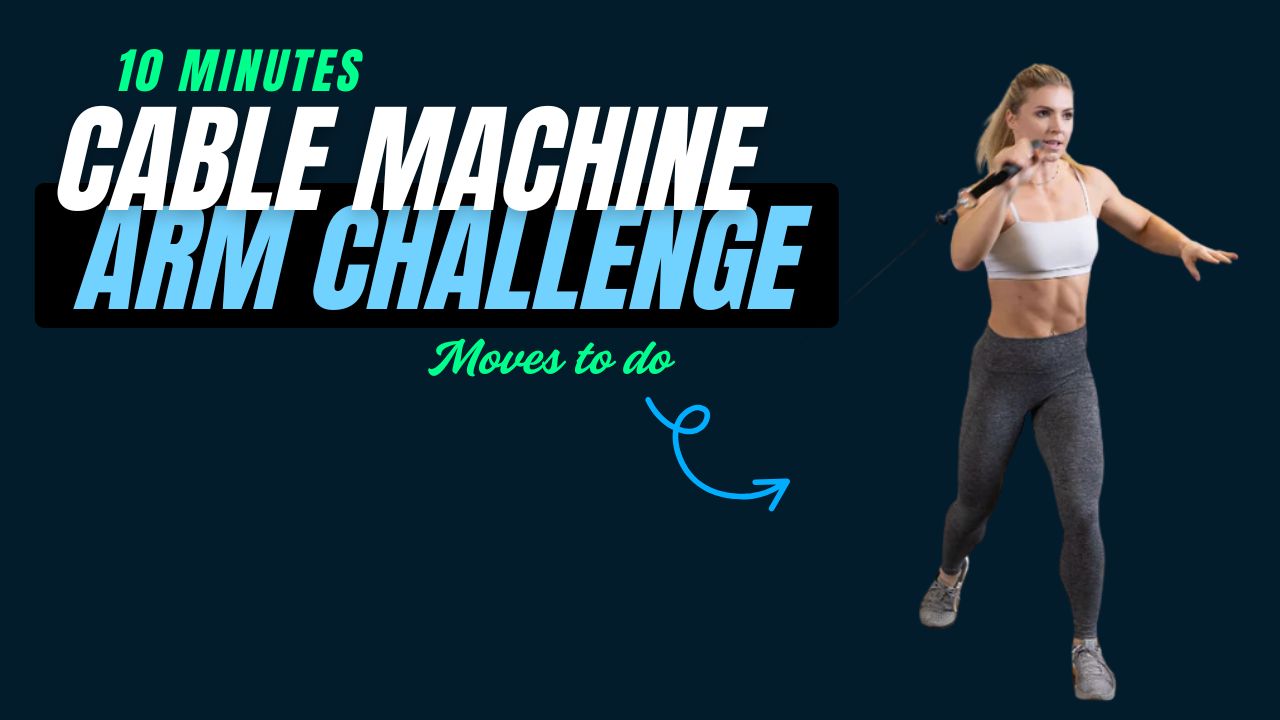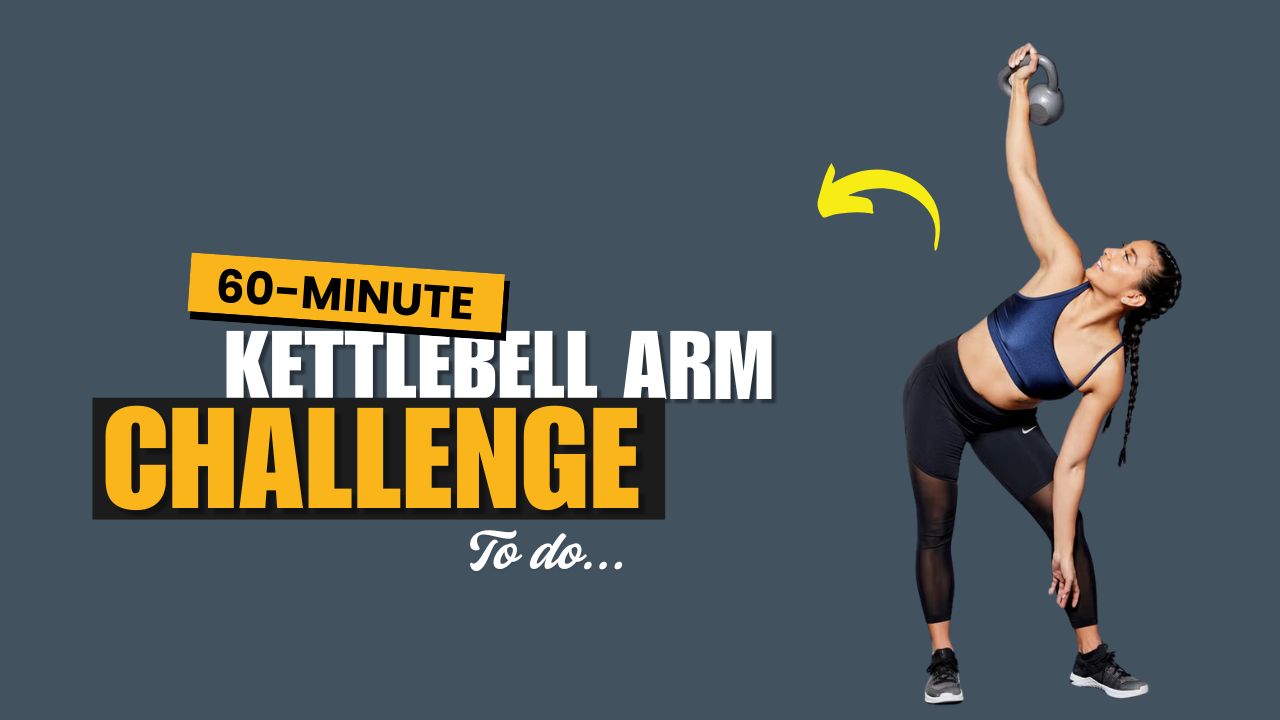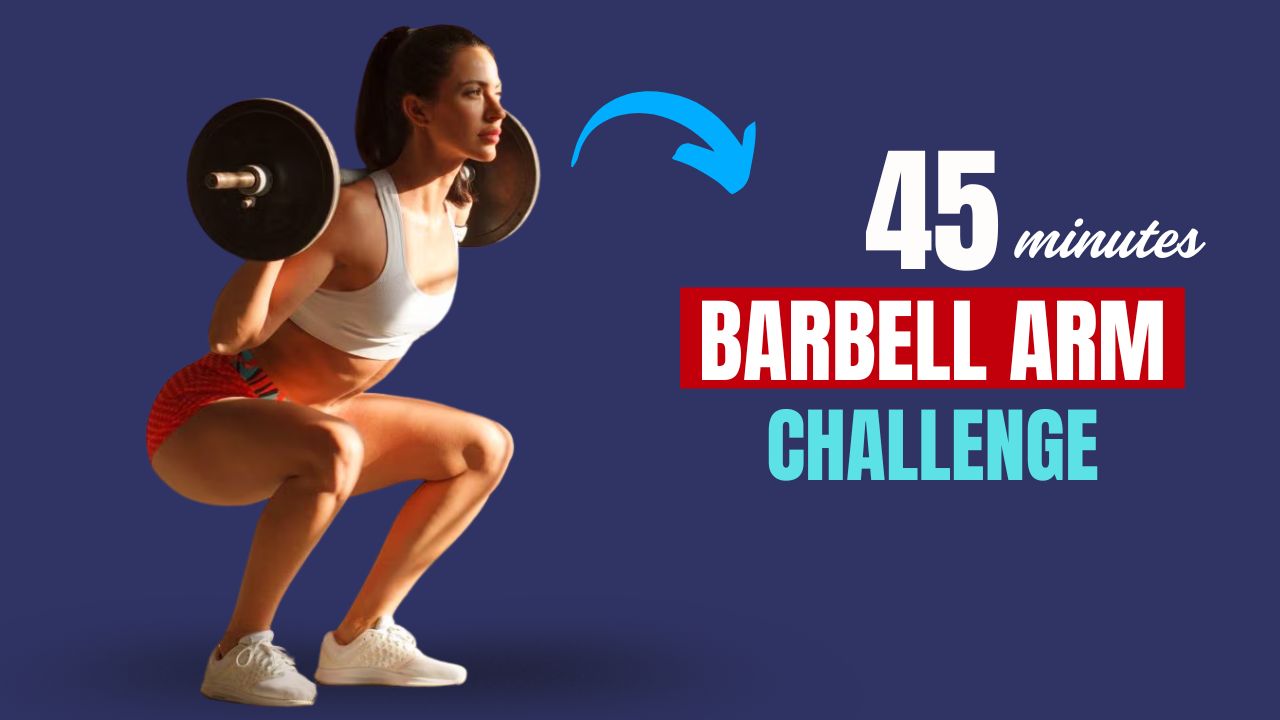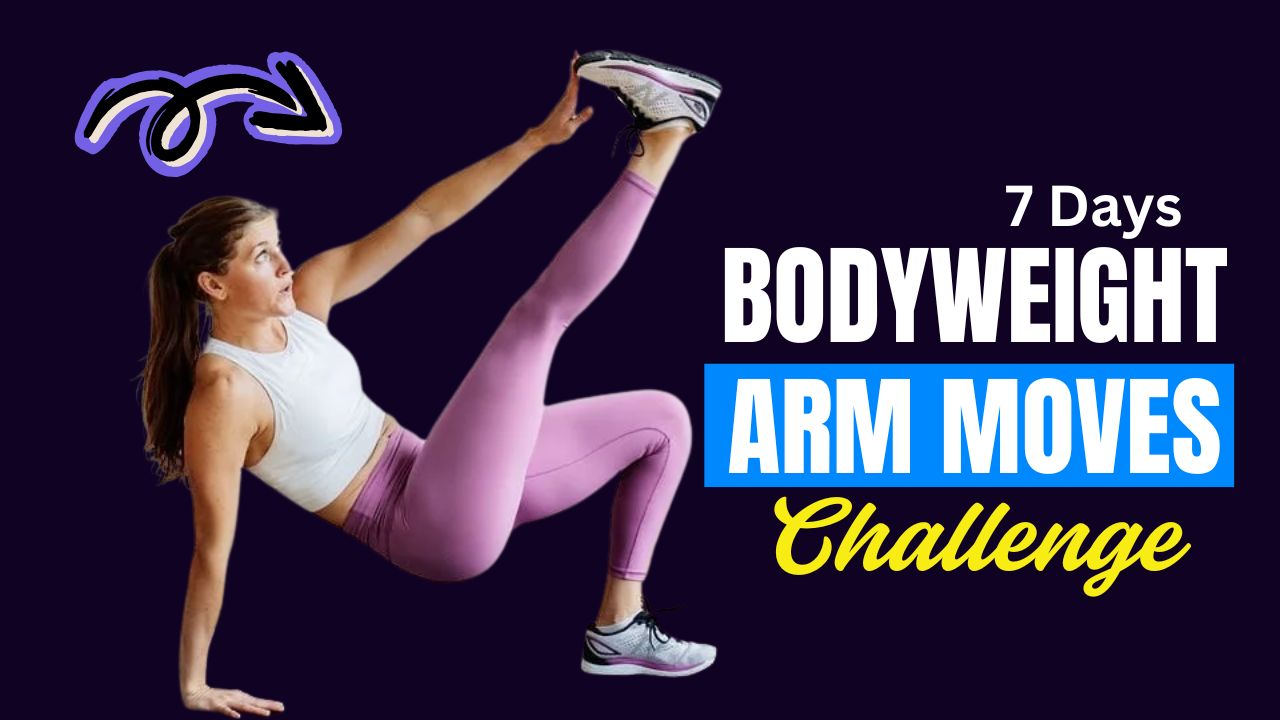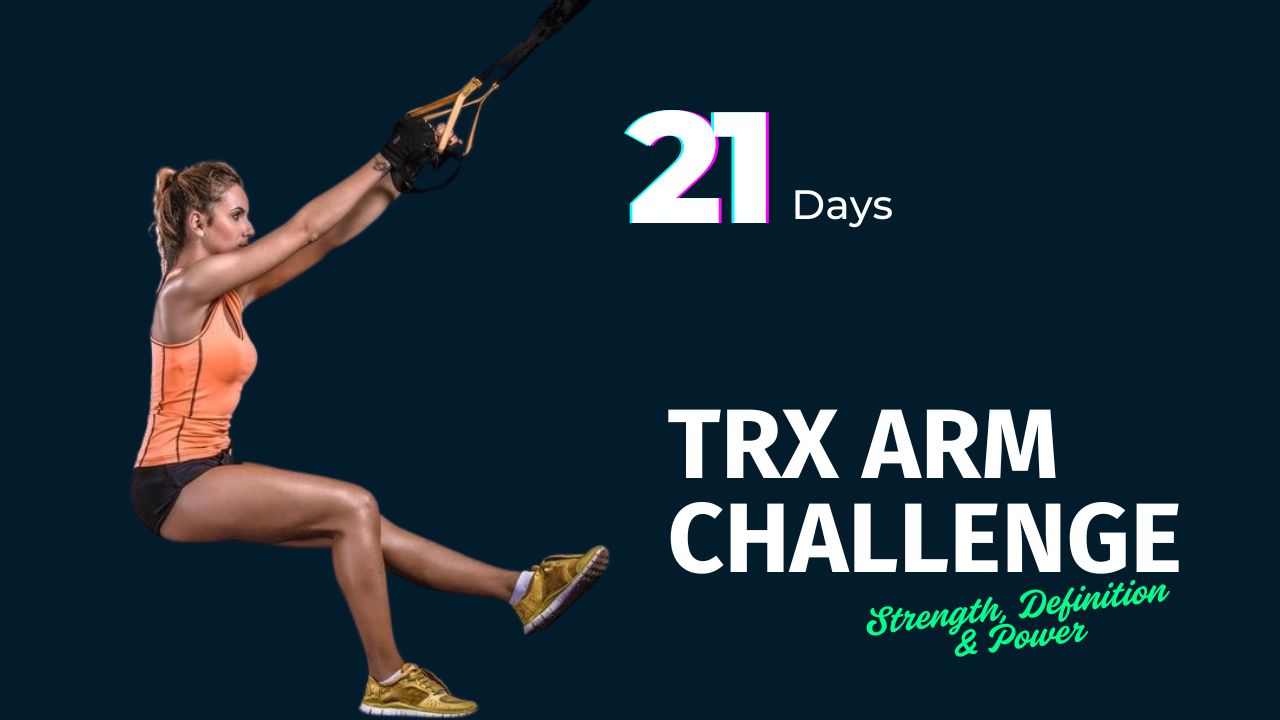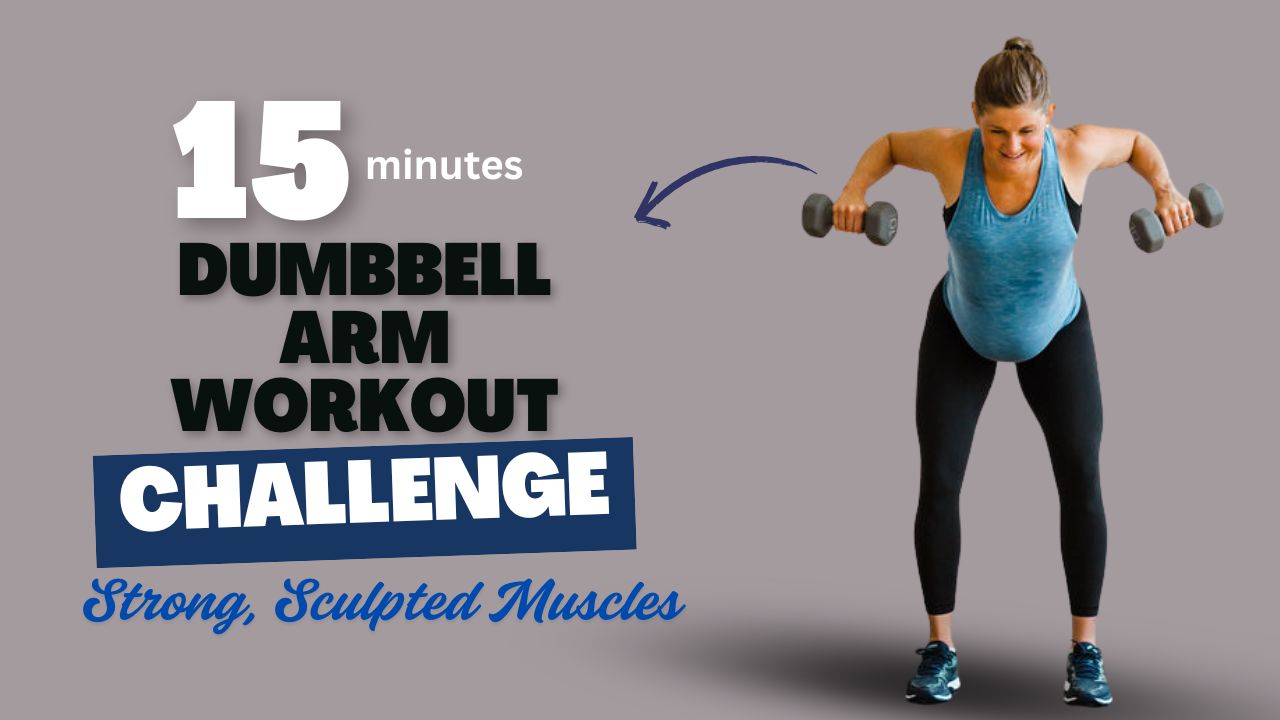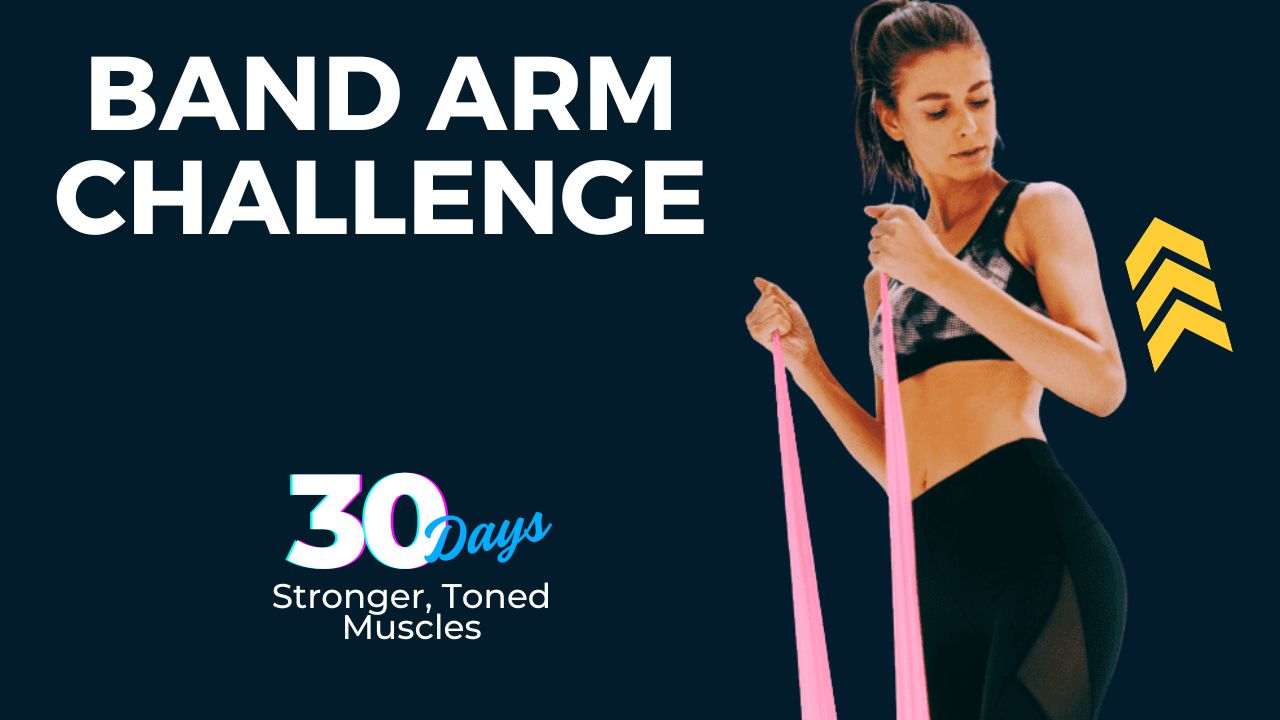Want to sculpt stronger, more defined obliques while building real-world core power?
If your ab routine is missing Hi-Lo cable oblique exercises, you’re skipping one of the most dynamic, functional ways to tone your waist and ignite rotational strength.
Unlike basic crunches, these moves dynamically engage the twisting core muscles, mimicking real-life movement patterns — from throwing a punch to swinging a bat.
And guess what? You don’t even need a heavy load to feel the burn — it’s all about controlled form, movement angles, and cable resistance.
Did You Know?
Your obliques aren’t just for looks — they stabilize your spine, improve posture, and are key to preventing lower back pain.
Let’s break down 8 killer Hi-Lo cable oblique exercises — each with step-by-step instructions, unique perks, and variations you can try to keep things fresh.

Table of Contents
What Happens After 30 Days of Hi-Lo Cable Oblique Training?
| Day Range | What You May Experience |
|---|---|
| Days 1–7 | – Improved mind-muscle connection in your obliques – Mild soreness from deep core activation |
| Days 8–14 | – Better control during twists and side bends – Enhanced posture and core awareness |
| Days 15–21 | – Visible toning along the waistline – Stronger trunk rotation during workouts or daily movements |
| Days 22–30 | – Noticeable core strength and definition – Reduced lower back discomfort and increased stability |
| Bonus (Beyond) | – Improved athletic performance in sports like tennis, boxing, or golf – A tighter, sculpted midsection |
Do’s & Don’ts of Hi-Lo Cable Oblique Exercises
| Do’s | Don’ts |
|---|---|
| Start with light weight to master proper form | Don’t twist aggressively with heavy weight |
| Engage your core throughout each movement | Don’t rely on your arms or shoulders to pull the cable |
| Use a full range of motion and controlled tempo | Don’t jerk or rush through reps |
| Breathe out during the effort phase (contraction) | Don’t hold your breath while twisting |
| Keep your hips stable during rotational moves | Don’t let your knees or hips rotate with the torso |
| Train both sides evenly to avoid imbalances | Don’t favor your dominant side or skip weaker angles |
| Incorporate both rotational & anti-rotational moves | Don’t only do side crunches or static holds |
| Warm up before starting any twisting exercise | Don’t begin cold — risk of muscle pull or joint strain |
| Maintain a slight bend in the knees while standing | Don’t lock your knees or hyperextend the back |
| Use variations (kneeling, split stance, standing) | Don’t repeat the same version every workout |
1. Hi-to-Low Woodchopper
A classic rotational movement that hits the external obliques hard.
How to Do It:
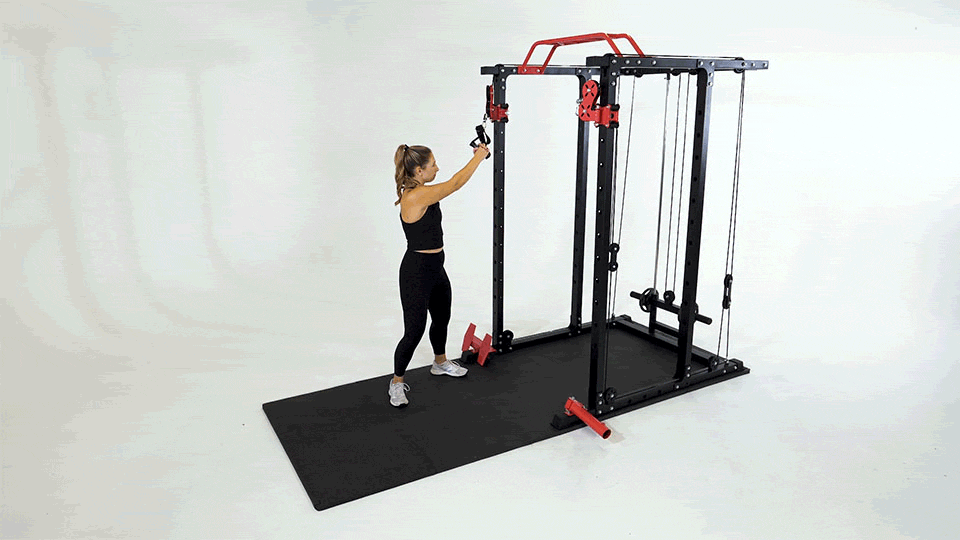
- Set the pulley at the highest point.
- Stand with your side to the machine, feet shoulder-width apart.
- Grab the handle with both hands above your shoulder.
- Pull diagonally down across your body like chopping wood, finishing near your opposite hip.
- Slowly return to the start.
✅ Benefits: Builds rotational core strength, improves trunk mobility, sculpts waistline.
🎯 Targets: Obliques, rectus abdominis, transverse abdominis.
Variation: Perform it in a lunge position for added lower body stability and challenge.
2. Kneeling Hi-Lo Cable Twist
A kneeling variation reduces leg drive and isolates the core muscles.
How to Do It:
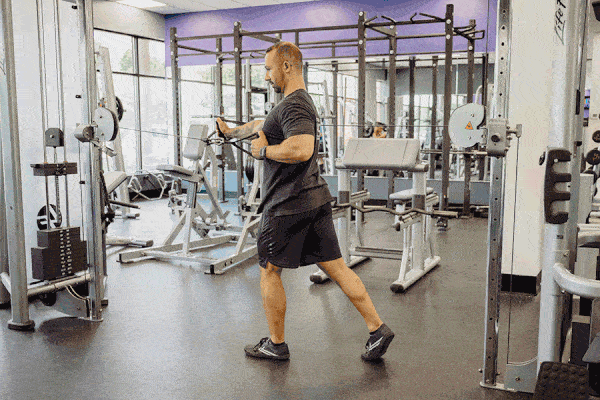
- Kneel beside the machine, knees shoulder-width apart.
- Grab the high pulley handle with both hands.
- Rotate your torso, pulling the cable diagonally down and across.
- Return slowly.
✅ Benefits: Forces core isolation, boosts anti-rotational stability, low back-friendly.
🎯 Targets: Internal & external obliques.
Myth Buster: “Rotational exercises are bad for your spine.”
Truth: When done with controlled form, they actually protect your spine by building rotational endurance.
3. Split-Stance Cable Chop
Adds balance work and athletic posture to your oblique training.
How to Do It:
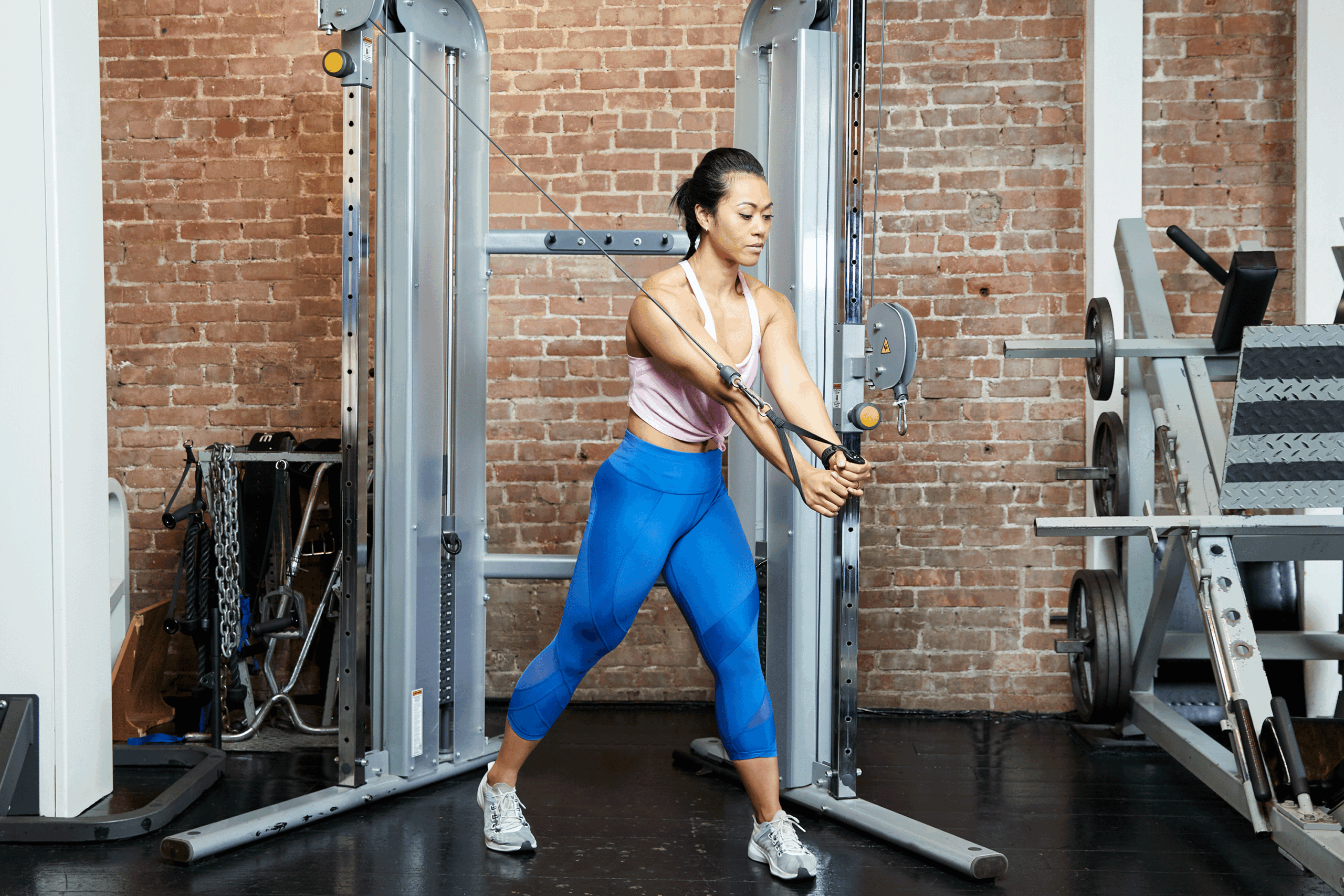
- Set the cable to the top position.
- Step forward into a split stance (front foot opposite cable machine).
- Hold the handle with both hands, arms extended.
- Pull diagonally downward, rotating through your torso.
- Control the return.
✅ Benefits: Enhances core-lower body coordination, and functional movement mimic.
🎯 Targets: Obliques, glutes, lats.
Interesting Fact: The obliques are fast-twitch dominant — meaning explosive, dynamic movements like this fire them up faster than static holds.
4. Standing Hi-Lo Reverse Chop
A reverse version that targets obliques from a different vector.
How to Do It:
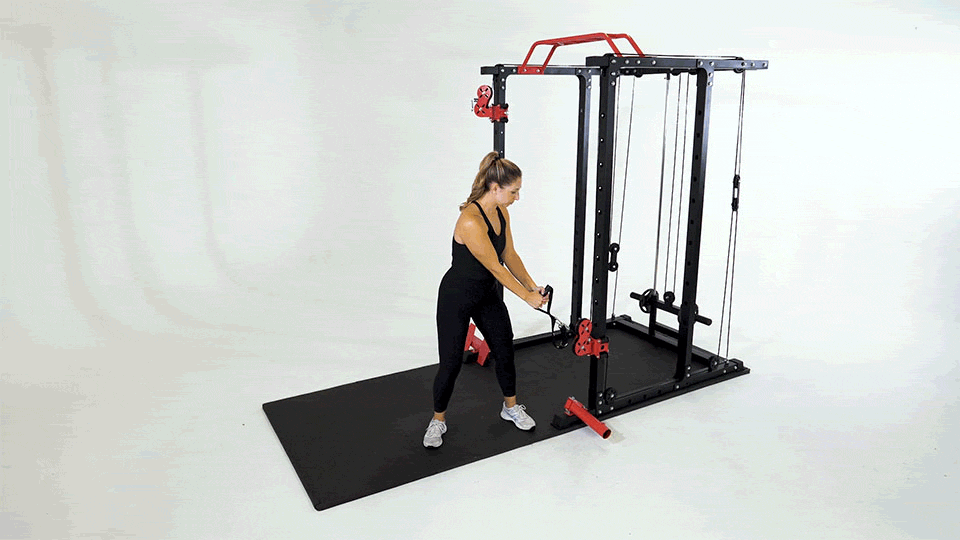
- Face away from the machine with the pulley low.
- Grab the handle below your hips.
- Pull it up across your body toward the opposite side.
- Rotate with control and return.
✅ Benefits: Hits deeper rotational patterns, and enhances thoracic mobility.
🎯 Targets: Obliques, deltoids, spinal erectors.
Variation: Try this with a resistance band for home-friendly training.
5. Hi-Lo Cable Russian Twist
An advanced standing version of the Russian twist using a Hi-Lo cable setup.
How to Do It:
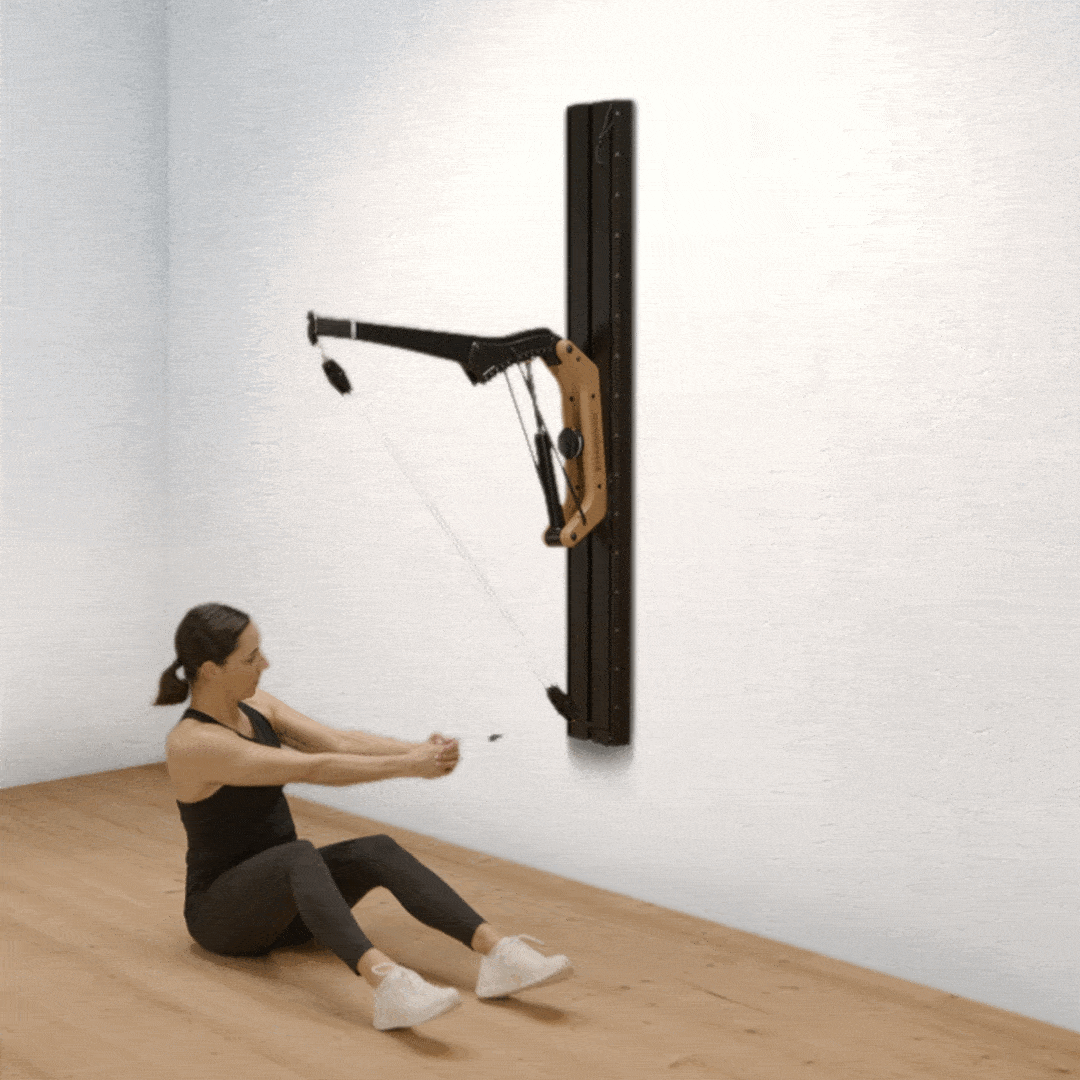
- Set the cable high, and stand perpendicular.
- Grab the handle with both hands at chest level.
- Rotate from shoulder to opposite hip in a twisting motion.
- Keep hips square.
✅ Benefits: Sharpens coordination, and adds resistance to a popular core move.
🎯 Targets: Obliques, transverse abdominis, serratus anterior.
Pro Tip: Keep your arms slightly bent but fixed — let your torso do the work, not your arms.
6. Cable Anti-Rotation Press (Pallof Press with Downward Vector)
It may look simple, but it’s brutal on your deep-core stabilizers.
How to Do It:
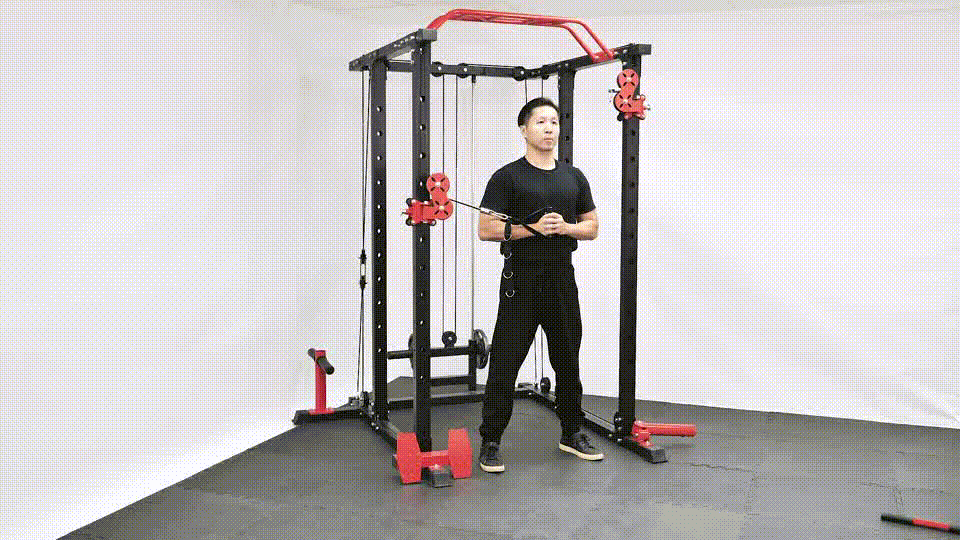
- Set the cable slightly above shoulder height.
- Stand sideways, and hold the handle with both hands at the chest.
- Extend arms straight out and hold.
- Fight the cable’s pull without rotating.
✅ Benefits: Improves anti-rotational control, essential for spine health.
🎯 Targets: Obliques (especially internal), TVA, erector spinae.
Why it matters: Anti-rotation is just as important as rotation — most people neglect this!
7. Hi-Lo Oblique Punch Rotation
Perfect for athletes and boxers to simulate a loaded twist + punch.
How to Do It:

- Set the cable high and hold it with one hand.
- Stand in a fighting stance.
- Pull the cable down and across as if throwing a punch.
- Focus on rotating through your core.
✅ Benefits: Boosts sport-specific power, and reactive core engagement.
🎯 Targets: Obliques, delts, pecs, core stabilizers.
Mind-Muscle Tip: Visualize twisting your ribs around your spine — this helps engage your obliques more deeply.
8. Cable Side Crunch (Hi-Lo Setup)
A cable take on the side crunch for direct oblique activation.
How to Do It:

- Set the cable high, and stand sideways.
- Hold the handle with one hand near your head.
- Bend sideways (not forward!), pulling the elbow toward the hip.
- Control the motion and repeat.
✅ Benefits: Isolates obliques, and improves lateral flexion control.
🎯 Targets: Obliques, QL (quadratus lumborum), intercostals.
Variation: Superset with bodyweight side crunches for a brutal burn.
Final Thoughts
The Hi-Lo cable machine isn’t just for chest or back days — it’s a hidden gem for carving out powerful, defined obliques. Whether you’re training for aesthetics, athleticism, or a healthier spine, incorporating these 8 exercises will transform how your core functions and looks.
Quick Challenge: Try combining 3 of these moves into a circuit: 30 seconds each, 3 rounds. Your obliques will thank you (after they stop screaming).
Frequently Asked Questions (FAQs)
What are oblique muscles, and why are they important?
Obliques are the muscles that run along the sides of your abdomen — including external obliques (outer layer) and internal obliques (deeper layer). They are essential for trunk rotation, lateral flexion (side bending), and stabilizing your spine during movement. Strong obliques improve posture, balance, and core power while also supporting injury prevention.
Why use a Hi-Lo cable machine for oblique exercises?
The Hi-Lo cable setup provides a constant, directional resistance that allows for natural rotational and diagonal movement patterns. This closely mimics real-life motions and targets the obliques more dynamically than static ab exercises like side crunches or planks. Plus, it lets you adjust height, angle, and resistance for endless variations.
How often should I train obliques with cable exercises?
Aim for 2–3 sessions per week, giving your core time to recover. Oblique training can be part of full-body workouts, core-focused days, or even added at the end of a leg or upper body session as a finisher.
Will these exercises reduce my love handles?
Hi-Lo cable exercises will strengthen and define your obliques, which improves muscle tone. However, spot reduction isn’t possible — visible results come from combining strength training with proper nutrition and fat-loss strategies.
Are these exercises good for improving posture and back pain?
Absolutely. Most Hi-Lo cable oblique moves engage deep core stabilizers and encourage proper trunk movement. This enhances spinal support and can help reduce lower back discomfort, especially when done with proper form.
Can I do these exercises at home?
While a cable machine is ideal, resistance bands with door anchors can replicate many of these movements. Exercises like woodchoppers, Pallof presses, and rotational pulls work well with bands as an at-home alternative.
Should I perform these exercises before or after my main workout?
For most people, after your main lifts is ideal — your core will still have enough energy but won’t interfere with compound movements like squats or deadlifts. Alternatively, use 1–2 moves as part of your warm-up to activate the core and prepare for rotation-heavy sports.
Are these exercises safe for people with herniated discs or spinal issues?
Many of them are, but it depends on the individual and the condition. Always consult with a medical or physical therapy professional first. Anti-rotational exercises like the Cable Pallof Press are often recommended for spine safety, while aggressive twisting movements should be avoided without clearance.
Can I combine these exercises into a circuit?
Yes — and it’s a fantastic way to build endurance and burn calories. Choose 3–4 exercises, perform each for 30–40 seconds, and repeat the circuit for 3–4 rounds with short rest between sets.
